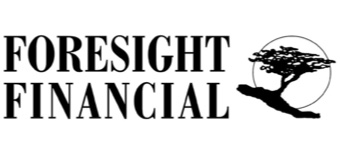
Impact of Higher Capital Gains Inclusion Rate on Financial & Estate Planning
One change proposed in the April 16, 2024 Federal Budget is raising the inclusion rate on capital gains from 50% to 66.7%. For individual taxpayers, the initial $250,000 of capital gains remains taxed at the 50% inclusion rate. However, for corporations and trusts, the increased inclusion rate applies to all capital gains. These adjustments are slated to come into effect starting June 25, 2024.
What does this mean for individual taxpayers?
Income taxes on realized capital gains are increasing. For example, in B.C. with a top marginal income tax rate of 53.5%, taxes paid on capital gains under $250,000 are taxed at 26.75%. Now, for gains over $250,000 the tax rate increases to 35.85%. For most taxpayers, many of whom would not realize over $250,000 of capital gains in a taxation year, this change will not have any impact. However, for those who do realize such a gain the additional tax could be significant.
Consider someone who has just sold recreational property. If the amount of gain on that Whistler ski cabin, for example, was $500,000, the tax payable on the transaction will increase from $133,750 to $156,500. If that same property had been held in the family for generations the increase in taxes, with the new inclusion rate, could be substantial.
The same will be true for BC residents who own rental properties or investment portfolios that they wish to sell and generate profit. For each $100,000 of capital gain over the $250,000 limit they will pay an additional $9,100 in income tax.
The biggest potential impact of the increased inclusion rate on capital gains will be in estate planning. When a taxpayer in Canada dies, he or she is deemed to have disposed of all their capital property at fair market value. For estates with a large amount of non-registered investments, rental, and recreational property as well as other appreciable capital property, the inclusion rate of 66.7% will increase the final tax bill considerably.
What does this mean for owners of private corporations?
For private corporations (and trusts) there is no reduced inclusion rate for the first $250,000 of gain. Every dollar of realized capital gain is taxed based on an inclusion rate of 66.7%. Using the ski cabin in the first example, if that property had been held in a corporation, upon its sale, the full $500,000 would attract tax based on 66.7% inclusion, increasing the total tax payable to $179,150.
Many successful professionals earn their income in a private corporation retaining surplus income not required for immediate expenses to accumulate corporately for future use. The proposed tax increases on both corporate investment realization and shareholder access to proceeds have been substantial.
There is a vehicle for Canadian-Controlled Private Corporations (CCPCs) known as the Capital Dividend Account. This notional account allows a tax-free flow of the non-taxable portion of capital gains to the shareholder. The amount of tax-free capital dividends has now been reduced because of the increased inclusion rate. For instance, if a corporation realizes a $500,000 capital gain (using the example of a B.C. company with a 50.7% investment tax rate), the corporation’s tax liability would be $169,084, compared to the previous $126,750 with a 50% inclusion rate. Prior to June 25, 2024, the tax-free capital dividend flowing to the shareholder would be $250,000, decreasing to $166,500 thereafter. Consequently, more tax paid within the corporation translates to fewer tax-free proceeds for the shareholder.
For corporations, capital gains will increase their Adjusted Aggregate Investment Income (AAII) more quickly due to the higher inclusion rate. This will have the effect of accelerating the erosion of the Small Business Deduction (low rate of tax on the first $500,000 of active business income) which is reduced by $5 for every $1 of AAII.
Planning Opportunities and Strategies
What are some planning tips and strategies that can be used to mitigate the effect of these new provisions?
-
If you are holding investments with more than $250,000 in deferred capital gains, consider declaring them prior to June 25, 2024. This will require careful consideration as it will require tax to be paid sooner than originally expected. It may also have some Alternative Minimum Tax implications so take this strategy under advisement;
-
Consider a further diversification of your investments to limit capital gain exposure. Cash value life insurance, in particular Participating Whole Life, has been growing in popularity for several years, primarily due to its stable growth and tax-exempt status. This product could prove beneficial in a re-allocation of current investments;
-
Permanent life insurance products have long been used in providing necessary estate liquidity to pay taxes at death. With estates now having a possibility of higher taxes due to the higher inclusion rates, the amount of life insurance held for this purpose should be increased;
-
For owners of private corporations holding capital investments, consider allocating some of those investments to personal ownership to take advantage of the lower inclusion rate for up to $250,000;
-
Corporations should also consider diversifying and re-allocating corporate surplus to a tax-exempt life insurance policy owned by the corporation. This will shelter those investments from high passive corporate investment income tax as well as help protect the Small Business Income Tax rate on the first $500,000 of active business income;
-
You may also want to reassess corporately owned life insurance to help provide for the estate liquidity needs of the business owner, since the death benefit of the policy in excess of its ACB can be paid to the surviving shareholder or family tax free from the Capital Dividend Account.
As in previous budgets, there is currently no draft legislation enacting the provisions of the April 16th budget. Once enacted, however, the terms of the budget impacting the inclusion rate of capital gains will be effective June 25, 2024. It would be prudent to discuss your planning and develop strategies sooner rather than later.




